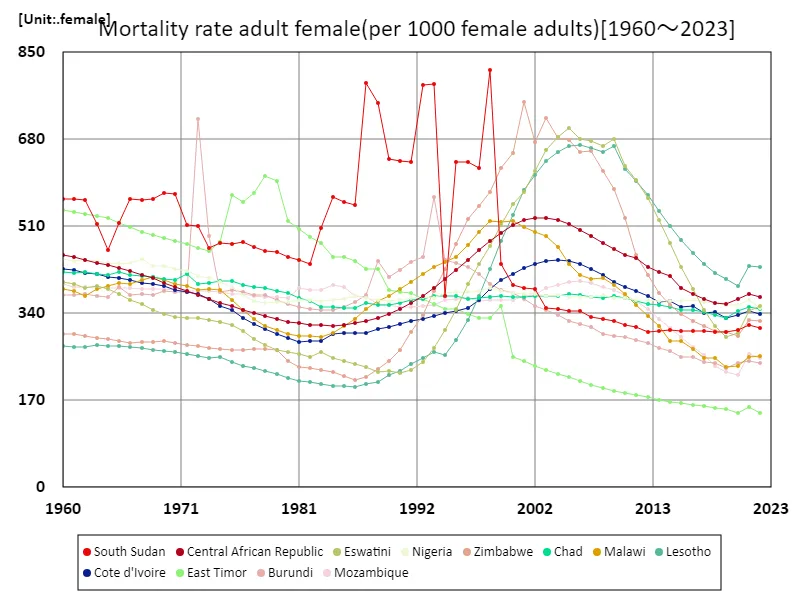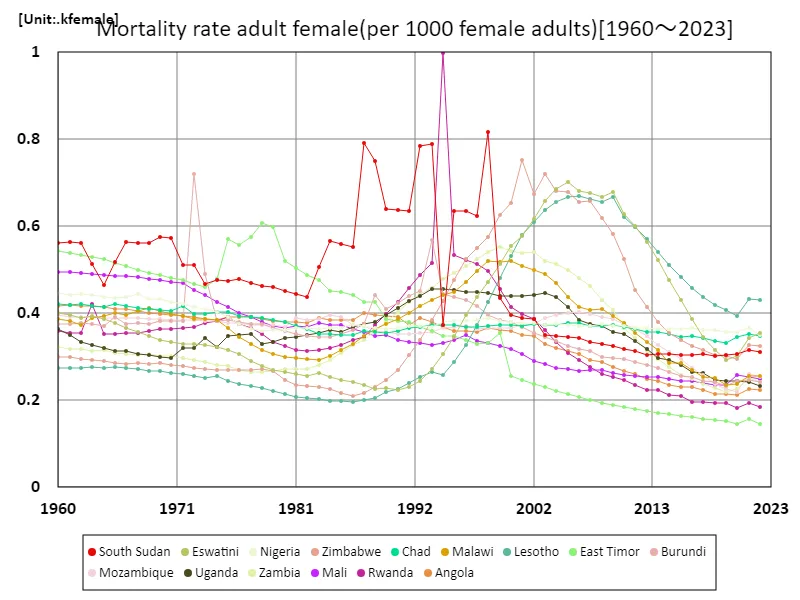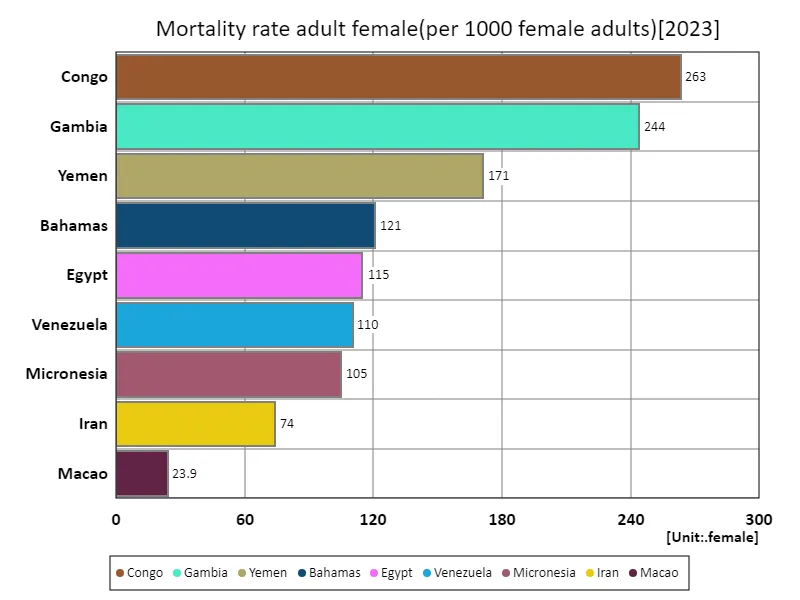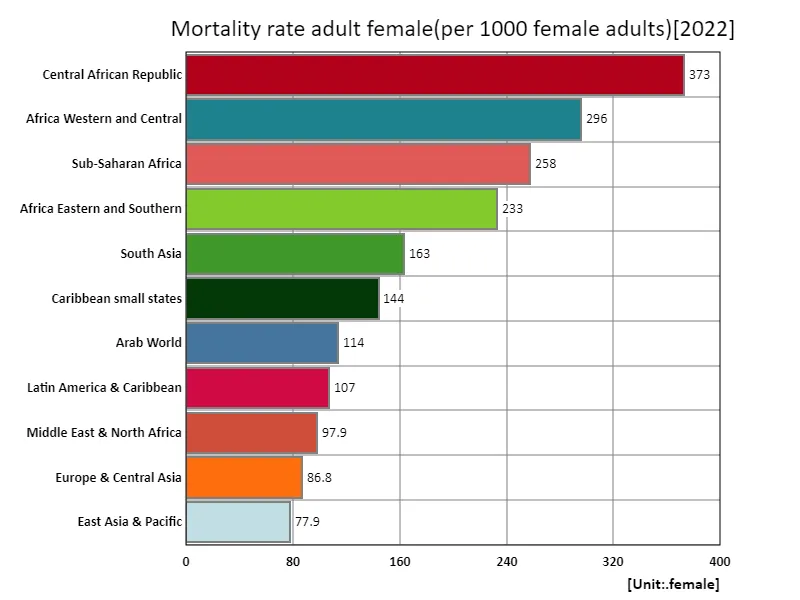Abstract
Lesotho’s adult female mortality rate of 431 in 2022 is extremely high. This may reflect the serious health challenges facing the country and the lack of medical infrastructure. Lesotho’s high mortality rate may be due to the HIV/AIDS epidemic, malnutrition, poverty, or limited health resources. In countries where the mortality rate for adult women is higher than in other countries, strengthening health systems, measures against infectious diseases, and economic support are important issues. Historically, economic development and improvements in health care have often led to falling mortality rates, but progress in countries like Lesotho may be lagging.
Number of adult female deaths (per 1,000 adult females)
Looking at data on adult female mortality (per 1,000 adult women) from 1960 to 2022, South Sudan stands out with its high mortality rate of 816 in 1998. The figures reflect a time when South Sudan has been facing a long civil war, political instability, a lack of health infrastructure and severe poverty. Currently, South Sudan’s mortality rate has fallen to 38.2% of its 1998 level, which represents some improvement but remains high. Historically, economic growth, improved health systems, and improvements in public health have contributed to declining mortality rates in many countries. In particular, the spread of education, vaccinations, and improved sanitation are important factors. In the case of South Sudan, post-war reconstruction, international assistance, and improved access to medical care are thought to have contributed to improvement, but sustained stability and further assistance are needed. Overall, declines in mortality rates are usually directly linked to social and economic progress.


The maximum is 816female[1998] of South Sudan, and the current value is about 38.2%
Deaths among adult women (per 1,000 adult women) (worldwide)
The peak of Rwanda’s adult female death toll at 998 in 1994 was a result of the widespread genocide that year. In addition to the direct causes of death resulting from the violence and unrest, the collapse of medical infrastructure and social dislocation have taken a major toll on health. Deaths have now fallen to 18.4% of the peak, reflecting Rwanda’s recovery, economic stability and improving health system. In recent years, international aid, local health programs and widespread vaccinations have contributed to improving health conditions. In general, declines in mortality rates are closely associated with economic development, increased education, and improved health services. In the case of Rwanda, we can see that government efforts and international support have been successful in dramatically improving mortality rates. However, sustained efforts and support are still needed, particularly in improving access for poor and remote areas.


The maximum is 998female[1994] of Rwanda, and the current value is about 18.4%
Deaths among adult women (per 1,000 adult women) (world, latest year)
Data for 2023 shows that Congo had the highest number of adult female deaths, with 263, compared with an overall average of 125, for a total of 1,250. Congo’s high mortality rate continues to reflect a lack of health infrastructure, poverty, malnutrition and civil war. These factors act in combination to have a significant impact on the health of adult women. In general, countries with high mortality rates need to strengthen their health systems, improve education and infection control. Falling mortality rates are directly linked to economic growth and improvements in health systems, and while average figures suggest some progress in these areas, there is still much room for improvement. In particular, in countries with high mortality rates, sustained support and effective health policies are important, and eliminating regional health disparities is key.


The maximum is 263female of Congo, the average is 136female, and the total is 1.23kfemale
Number of adult female deaths (per 1,000 adult females) (region, latest year)
Data for 2022 shows the highest number of adult female deaths was in the Central African Republic with 373, compared with an overall average of 177, for a total of 1,950. The high mortality rate in the Central African Republic is driven by multiple factors, including civil war, political instability, limited health resources and infectious disease outbreaks. These factors have a significant impact on health care and living conditions, leading to high mortality rates. The overall average death rate of 177 indicates progress in improving global health, particularly as a result of economic development and improved health systems. However, the total figure of 1,950 still indicates that there is a serious health problem in many countries. Countries with high mortality rates need sustained support, improved access to health care and improved education. International aid and local solutions are also important factors contributing to reducing health disparities.


The maximum is 373female of Central African Republic, the average is 177female, and the total is 1.95kfemale



Comments